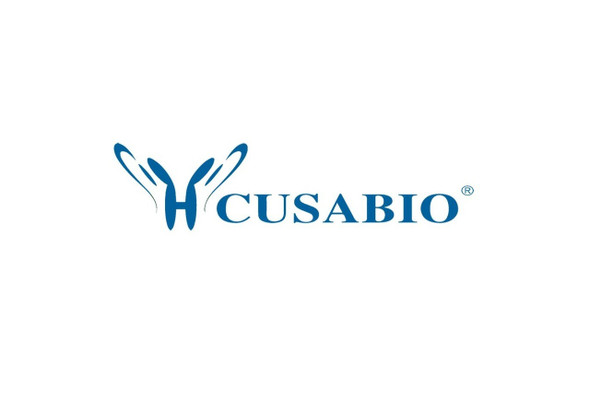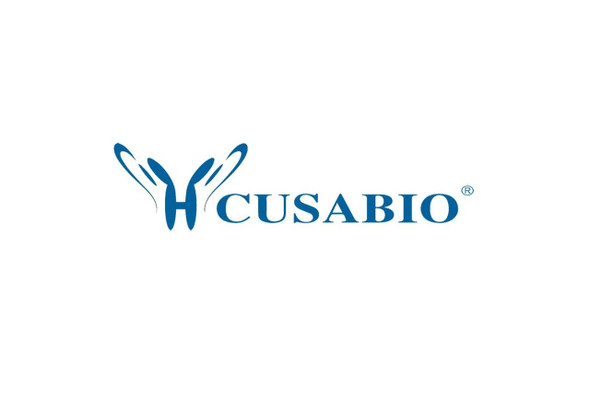Cusabio Human Recombinants
Recombinant Human Synaptotagmin-1 (SYT1), partial | CSB-EP023029HU
- SKU:
- CSB-EP023029HU
- Availability:
- 3 - 7 Working Days
Description
Recombinant Human Synaptotagmin-1 (SYT1), partial | CSB-EP023029HU | Cusabio
Alternative Name(s): Synaptotagmin I ;SytIp65
Gene Names: SYT1
Research Areas: Neuroscience
Organism: Homo sapiens (Human)
AA Sequence: KNAINMKDVKDLGKTMKDQALKDDDAETGLTDGEEKEEPKEEEKLGKLQYSLDYDFQNNQLLVGIIQAAELPALDMGGTSDPYVKVFLLPDKKKKFETKVHRKTLNPVFNEQFTFKVPYSELGGKTLVMAVYDFDRFSKHDIIGEFKVPMNTVDFGHVTEEWRDLQSAEKEEQEKLGDICFSLRYVPTAGKLTVVILEAKNLKKMDVGGLSDPYVKIHLMQNGKRLKKKKTTIKKNTLNPYYNESFSFEVPFEQIQKVQVVVTVLDYDKIGKNDAIGKVFVGYNSTGAELRHWSDMLANPRRPIAQWHTLQVEEEVDA
Source: E.coli
Tag Info: N-terminal 6xHis-tagged
Expression Region: 99-416aa
Sequence Info: Cytoplasmic Domain
MW: 40.3 kDa
Purity: Greater than 90% as determined by SDS-PAGE.
Relevance: May have a regulatory role in the mbrane interactions during trafficking of synaptic vesicles at the active zone of the synapse. It binds acidic phospholipids with a specificity that requires the presence of both an acidic head group and a diacyl backbone. A Ca2+-dependent interaction between synaptotagmin and putative receptors for activated protein kinase C has also been reported. It can bind to at least three additional proteins in a Ca2+-independent manner; these are neurexins, syntaxin and AP2.
Reference: Identification of a human synaptotagmin-1 mutation that perturbs synaptic vesicle cycling.Baker K., Gordon S.L., Grozeva D., van Kogelenberg M., Roberts N.Y., Pike M., Blair E., Hurles M.E., Chong W.K., Baldeweg T., Kurian M.A., Boyd S.G., Cousin M.A., Raymond F.L.J. Clin. Invest. 0:0-0(2015)
Storage: The shelf life is related to many factors, storage state, buffer ingredients, storage temperature and the stability of the protein itself. Generally, the shelf life of liquid form is 6 months at -20?/-80?. The shelf life of lyophilized form is 12 months at -20?/-80?.
Notes: Repeated freezing and thawing is not recommended. Store working aliquots at 4? for up to one week.
Function: May have a regulatory role in the membrane interactions during trafficking of synaptic vesicles at the active zone of the synapse. It binds acidic phospholipids with a specificity that requires the presence of both an acidic head group and a diacyl backbone. A Ca(2+)-dependent interaction between synaptotagmin and putative receptors for activated protein kinase C has also been reported. It can bind to at least three additional proteins in a Ca(2+)-independent manner; these are neurexins, syntaxin and AP2. Plays a role in dendrite formation by melanocytes
Involvement in disease: A SYT1 rare mutation has been found in a child with a severe neuro-developmental disorder. The individual harboring this variant shows early onset dyskinetic movement disorder, severe motor delay and profound cognitive impairment, suggesting that SYT1 may play a role in the pathogenesis of this neuro-developmental disorder.
Subcellular Location: Cytoplasmic vesicle, secretory vesicle membrane, Single-pass membrane protein, Cytoplasmic vesicle, secretory vesicle, synaptic vesicle membrane, Single-pass membrane protein, Cytoplasmic vesicle, secretory vesicle, chromaffin granule membrane, Single-pass membrane protein, Cytoplasm
Protein Families: Synaptotagmin family
Tissue Specificity: Expressed in melanocytes (PubMed:23999003).
Paythway: Synapticvesiclecycle
Form: Liquid or Lyophilized powder
Buffer: If the delivery form is liquid, the default storage buffer is Tris/PBS-based buffer, 5%-50% glycerol. If the delivery form is lyophilized powder, the buffer before lyophilization is Tris/PBS-based buffer, 6% Trehalose, pH 8.0.
Reconstitution: We recommend that this vial be briefly centrifuged prior to opening to bring the contents to the bottom. Please reconstitute protein in deionized sterile water to a concentration of 0.1-1.0 mg/mL.We recommend to add 5-50% of glycerol (final concentration) and aliquot for long-term storage at -20?/-80?. Our default final concentration of glycerol is 50%. Customers could use it as reference.
Uniprot ID: P21579
HGNC Database Link: HGNC
UniGene Database Link: UniGene
KEGG Database Link: KEGG
STRING Database Link: STRING
OMIM Database Link: OMIM










